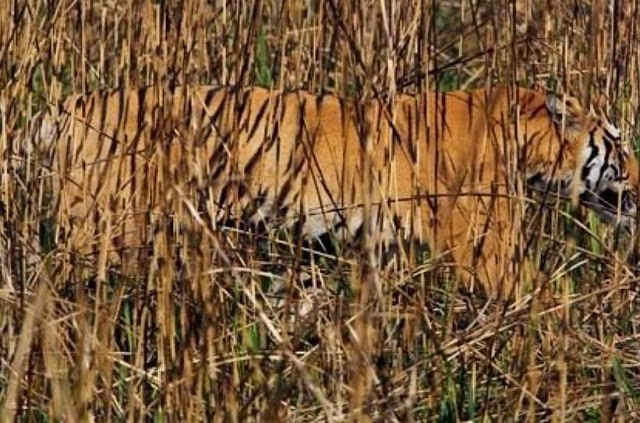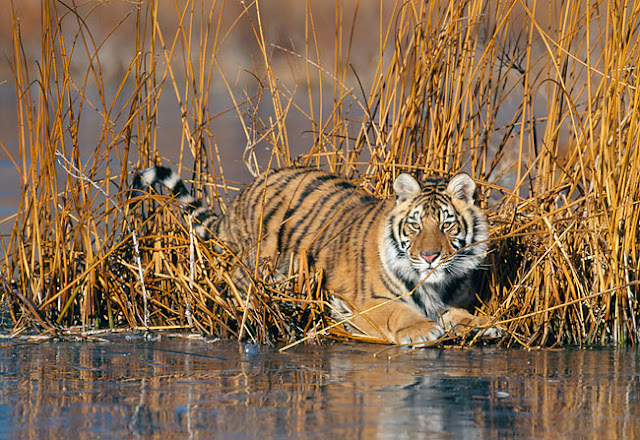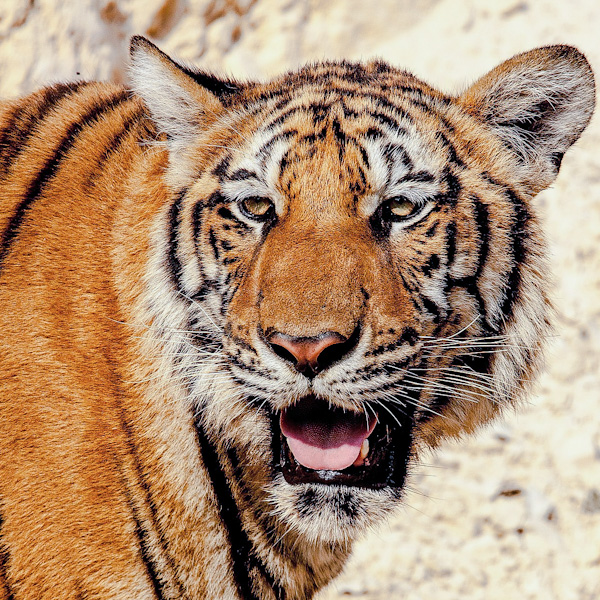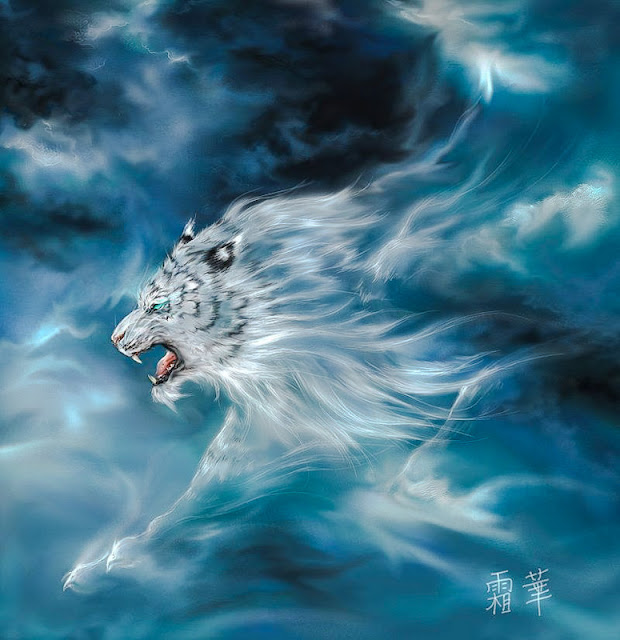2 reasons why the orange and black striped tiger is well camouflaged
It may baffle some people as to how the tiger's coat can possibly be good camouflage to help it stalk prey. The bright orange background colour and the dense black stripes just look too stark to be good camouflage. And the tiger lives in the jungle doesn't it, and the jungle is green? How can orange be camouflage when the landscape is green? When it can for two reasons.
To prey animals the colour is not orange
Fairly recently, in 2019, it has been decided that some prey animals - particularly deer a classic prey animal of the tiger - suffer from what humans would regard as colour blindness because they can only detect blue and green light and not red light. Because of this, the bright orange tiger coat looks grey or a green/grey. The images below give us an impression as to how a tiger might look in a jungle environment.
 |
| How a prey animal might see a tiger as they are colour blind to red. Image: MikeB |
 |
| How a prey animal might see a tiger as they are colour blind to red. Image: Daily Mail. |
Dr. John Fennell at the University of Bristol, and colleagues, did some work on this and used computers to figure out how certain animals are seen and can be detected.
Certain animals are 'dichromats', they cannot detect the difference between red and green and he reported in the Royal Society Journal Interface that "when viewed as a dichromat, the tiger's colour is very effective [as a camouflage]".
A secondary question is why tigers didn't evolve to have green fur. Dr. Fennell and his colleagues say that mammals are not able to produce green fur and that to achieve that would "require a significant change to mammalian biochemistry".
The tiger landscape is often not green but orange
However, I would like to follow up that statement with the fact that the tiger very often lives in a landscape which is not green. They live in a range of landscapes some of which are green, and some are orange as produced with reeds which as you can see in the photograph camouflage the tiger very effectively. Or they live in birch forests (Siberian tiger) or very dry, burnt landscapes where the grasses are orange.
 |
| Bengal tiger in long, orange grass. Image in public domain. |
 |
| Tiger in reeds showing that the orange and black stripes of the coat is a decent camouflage. Image: Klein Herbert. |
Therefore, it is unreasonable to state that the tiger's coat is bad camouflage even if you can see the colour red. Here is another example:
.jpg) |
| Image: Image by anju_gupta from Pixabay |
I think it's quite a neat point because humans tend to forget that some people and many animals do not see the world as we see them. In fact, domestic cats see the world in a degraded way under normal lighting conditions compared to a healthy human with good eyesight.
Under dusk and dark conditions, the cat is very able to see with greater clarity than the human, because they have a reflective layer behind the retina which magnifies amount of light which impinges upon the retina.
Cats also have a wider field of vision than humans.




Comments
Post a Comment
Please comment.